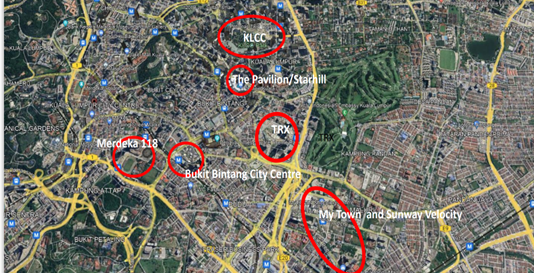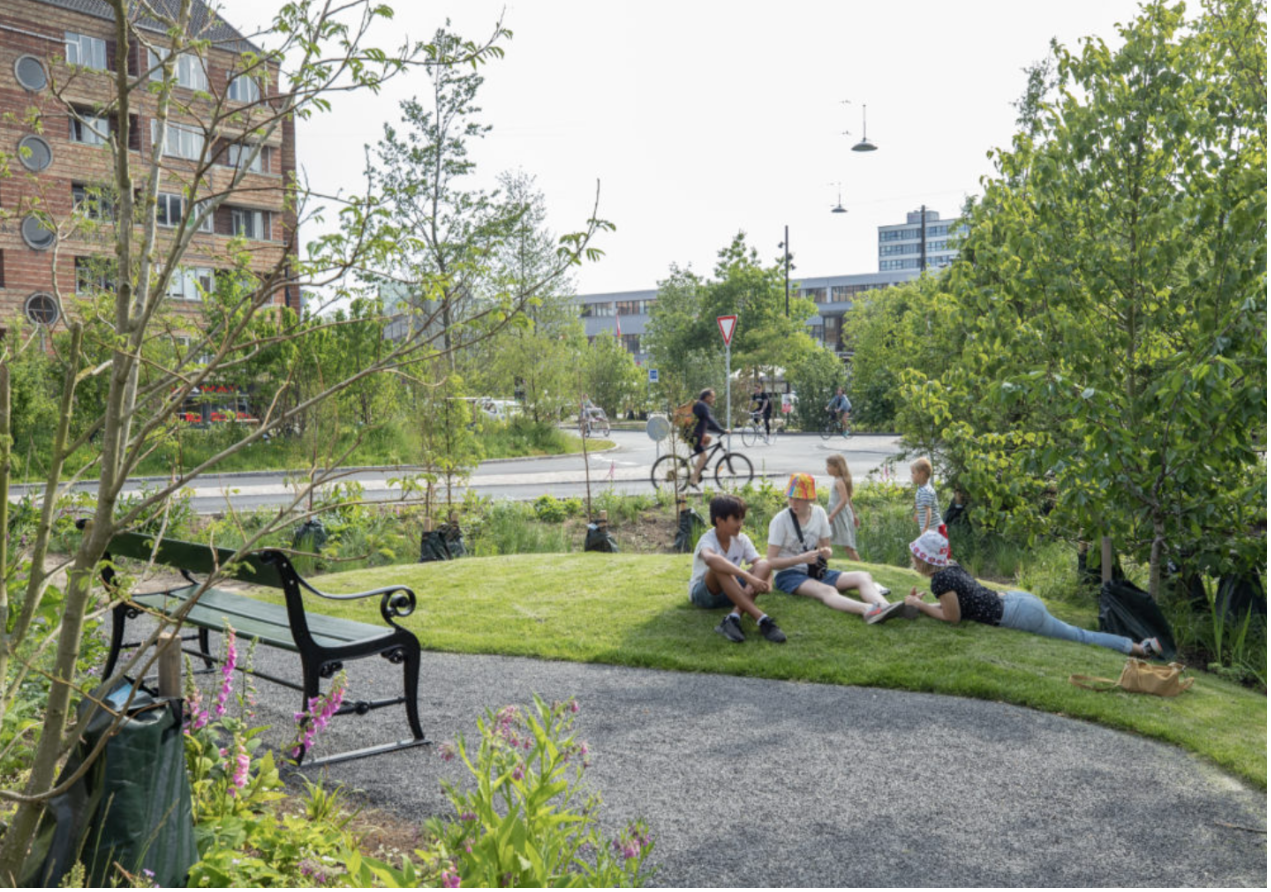Urban design is the design of towns and cities - the art of shaping public realms.
It involves a collaborative process in making places for people that give life and happiness. The sense of place generates a positive urban life where the physical settings, the activities and the meanings of place coincide in the human experience.
Cities are shaped by various qualities to fulfil the needs of urban inhabitants. The continuing pressure of urban life demands for human-oriented city planning and design. Urban design influence how people use public spaces and the image developed in their perception of the places.
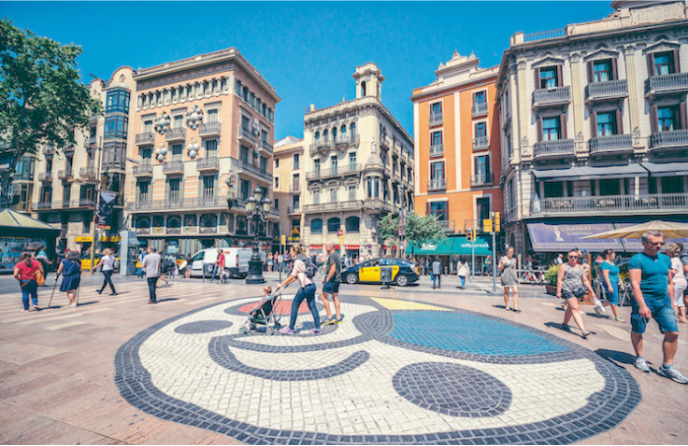
View of an open public space utilized by peoples from all walks of life
http://www.archdaily.com
The failure to provide good design could lead to unusable and abandoned spaces, thus unresponsive to the people’s need to interact and to freely move in the city with a sense of comfort and security. Urban places are always in constant change; in many cases new intervention does not integrate well with the existing setting and townscape. As a result, the identity and the character of the places weakened.
Urban designers are working on creating identifiable towns and neighbourhoods, unique architecture, aesthetically pleasing public places and landmarks and nodes. Urban design advocates principles to make urban places better places to live, work and play. Those include accessibility, legibility, comfort, safety and sociability. A good place reflects good image and character.
Public spaces must function to support social activities. Inclusive design allows spaces to be used for all without fear and alienation. People interaction happens in public spaces shape the life of the streets and spaces. Efficient public transport networks, good linkages with accessible and well-connected spaces allow for a constant and seamless flow of pedestrian movement towards activity nodes and attractions in a city.
A city should be designed to prioritize pedestrians over vehicles; landscape over buildings. A merging of architecture and landscape creates a place of harmony and balance.
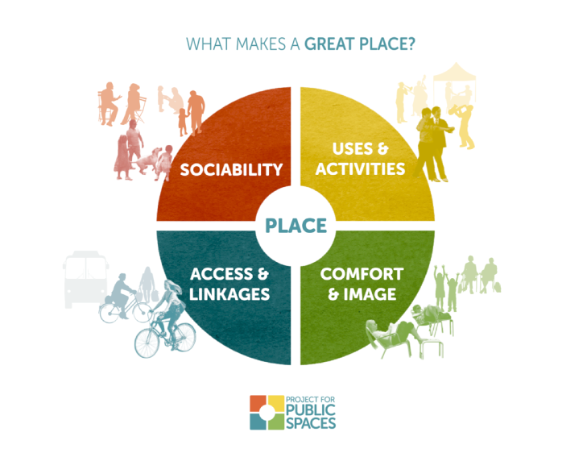
What makes a Great Place –Qualities outlined by Gehl
https://mobycon.com/updates/how-to-make-streets-into-great-public-spaces/
In sustaining place meaning and identity, it is essential to identify how people make sense of the city. A study on the legibility of Kuala Lumpur city centre indicated the importance of the path as the most identifiable urban element despite the dominance of towers and buildings in the areas (Lai Kum, 2012). Findings from a study on place attachment to traditional streets in Kuala Lumpur (conducted by the author) found that social attachment, as a result of social activities has a stronger influence on the bonding of people and places in the city compared to the attachment to the physical elements such as major landmarks and nodes. Here, the city should be seen as a collection of buildings and the manifestation of social meanings and values.
The aspects of meaning and attachment should be considered in making places sustainable and livable. In preserving the identity of places in the Asian context, place attachment and meaning(s) could be explained by examining the live-in experience of the people in place. The multi-cultural characteristics will pose a challenging task in determining the social and psychological values of the place in the perception of the people. In cities, the form and degree of attachment are reflected in people-place dependency and associations in terms of the economic and cultural aspects. In some parts of Asia, the cultural significance of the place is strongly manifested in the diversity, colonial influence, and multi-cultural and multi-ethnic identity, which form the distinctive townscape character.
The evolution of places should respond to the cultural environments, where the social well-being of communities and their valuable and memorable elements can grow accordingly. Community attachment may be the influencing factors in defining a sense of place. The meanings are layered in the social and cultural construction of place. However, these values are continuously threatened by modernization and unfit regeneration of places and global images. This condition will lead to the issue of social detachment and places devoid of significance. It is important to understand the roles of cultural spaces by examining the psychological sense of places imbued in the inhabitants’ lives from the past to the present.
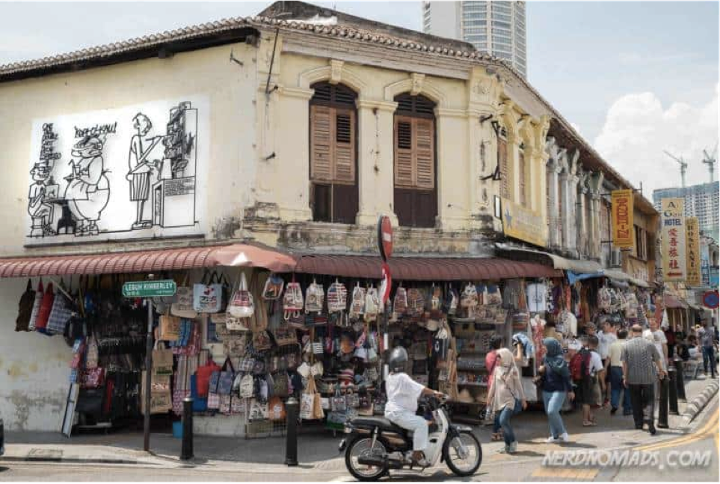
Historic Townscape - A view of a street corner in Georgetown heritage district, Penang.
Source: Nerdnomad.com
In Malaysia, the need for urban design consideration in city-making is evident to preserve the character and identity of our cities. Much has been lost to the uncontrolled development, lacking in the sense of place and authenticity. The people and culture’s resilience is reflected in the townscape’s character . The effort to revitalize the Malaysian townscape has been initiated by the Malaysian Urban Design Association (PEREKABANDAR) aimed at promoting livable and sustainable urban environments in the cities of Malaysia. MyTownscape Initiatives is developing programs such as Townscape Impact Assessment and Townscape Rating that allow the community to be more aware of the character and quality of our towns and cities. Education, outreach, and collaboration, aim to empower urban transformation and create more vibrant, functional, and sustainable urban environments for all. (https://www.perekabandar.org.my/mytownscape)
 |
Assoc. Prof. Dr. Norsidah Ujang
Fakulti Rekabentuk dan Senibina,
Universiti Putra Malaysia
|
Date of Input: 16/08/2023 | Updated: 16/08/2023 | uswahhasanah
MEDIA SHARING
















